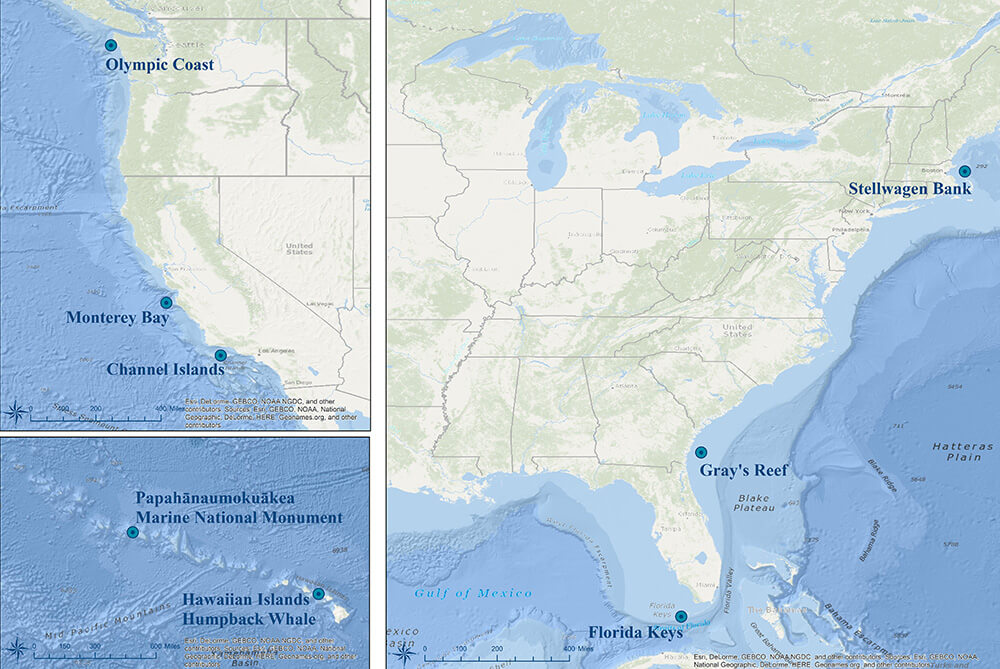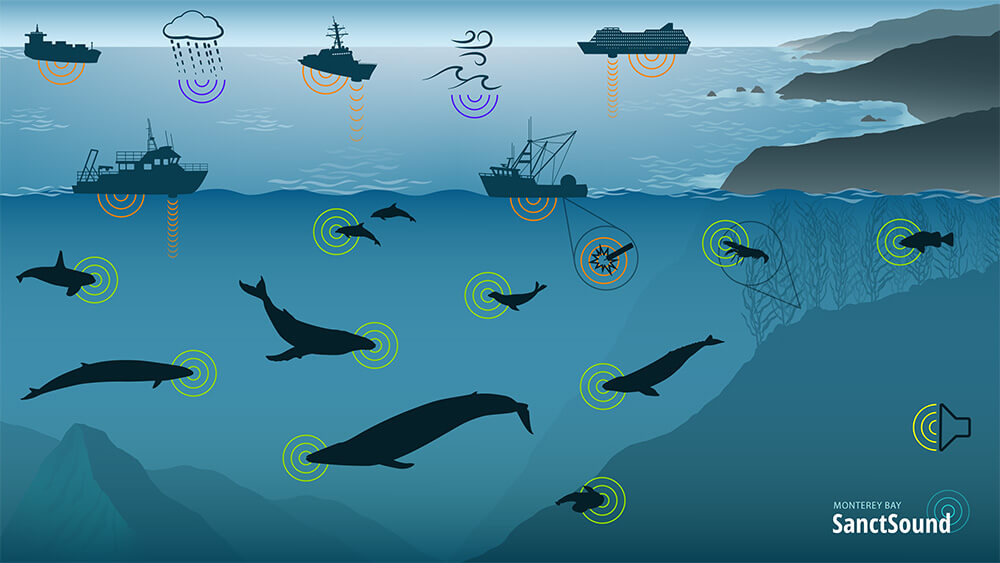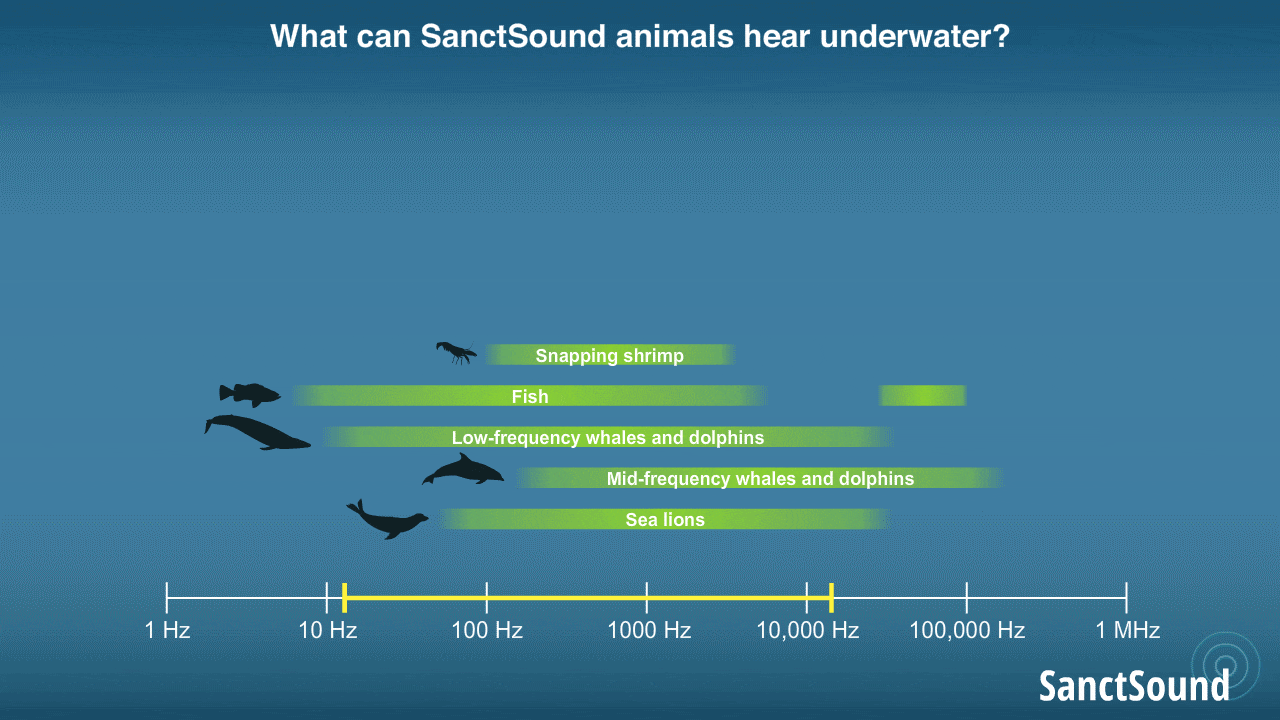April 2022
NOAA, the U.S. Navy, and partners have launched a new web portal that allows users to learn about and listen to underwater sounds throughout the National Marine Sanctuary System. As the sanctuary system celebrates its 50th anniversary, this resource provides another way to experience the wonders of America’s underwater treasures without getting wet.
The SanctSound portal invites the public to explore the results of a three-year project involving over 50 scientists from 20 institutions from all over the country who collected and analyzed underwater recordings from seven national marine sanctuaries and one marine national monument, including waters off Hawaii and the East and West coasts.

SanctSound recordings include sounds made by marine animals and physical processes, like wind and waves, as well as sounds produced by human activities. Invertebrates (like snapping shrimp), fish, whales, vessels, fishing activities, and sonars used in military training are a few of the expected and relatively well-characterized sources of sound recorded throughout the project.

The web portal allows users to explore the sonic features of each sanctuary, and to make comparisons among locations to better understand how similar or different they are from each other. To do this, the portal describes sound information from each of its 30 recording locations in a comparable way. SanctSound generated 300 terabytes of data, all of which are accessible to download from the NOAA National Centers for Environmental Information (NCEI) Passive Acoustic Archive. Standard measurements extracted from these recordings are also archived at NCEI and made accessible through the web portal, which is hosted by the U.S. Integrated Ocean Observing System.
Sound is critical for the survival of many marine animals because it’s a primary means of communication, orientation and navigation, finding food, avoiding predators, and mate selection. As such, human activities that produce sound underwater have the potential to negatively impact animals by reducing their ability to hear prey, predators, and each other. In other cases, loud sounds can cause physical injury or behavioral reactions.

Underwater sounds are helping sanctuaries better protect these special places. Education and outreach products accessible through the web portal show how this new information is being used at individual sanctuaries and across the system. As part of the National Marine Sanctuary Systems’s 50th Anniversary celebration, an Ocean Sound and Impact of Noise Resource Collection was created, which allows educators to explore a collection of NOAA videos, lesson plans, webinars, web stories, virtual reality, and more focused on this topic. A webinar tutorial for the SanctSound web portal will be held on May 17, 2022 from 2-3 p.m. ET.
Grab some headphones, turn up the volume on your phone or computer, and dive into the underwater sounds of your sanctuary system!
Dr. Leila Hatch is a research ecologist with the Office of National Marine Sanctuaries' Science and Heritage Division and co-lead of the SanctSound project

